 I’ve devoted several episodes of VoiceBox, the weekly public radio series on KALW 91.7 FM all about the human voice which I host and produce, to the subject of voice therapy. But all the conversation about nodes on the vocal folds, dealing with fatigue by maintaining good airflow and how voice changes with age didn’t hit home until I visited the University of California at San Francisco’s Voice and Swallowing Center yesterday for a consultation with vocal therapist Sarah Schneider (whose been my guest on VoiceBox three times to date) and otolaryngologist, Dr. Mark Courey.
I’ve devoted several episodes of VoiceBox, the weekly public radio series on KALW 91.7 FM all about the human voice which I host and produce, to the subject of voice therapy. But all the conversation about nodes on the vocal folds, dealing with fatigue by maintaining good airflow and how voice changes with age didn’t hit home until I visited the University of California at San Francisco’s Voice and Swallowing Center yesterday for a consultation with vocal therapist Sarah Schneider (whose been my guest on VoiceBox three times to date) and otolaryngologist, Dr. Mark Courey.
I think it behooves all singers, whether they have voice issues or not, to get their vocal folds checked out at least once in their singing careers. Because all the apparatus involved with singing is internal, it really helps to be able to see first-hand with your own eyes how the mechanisms actually work.
In my consultation, Sarah felt my adam’s apple and throat muscles, photographed my profile while I read out a “phonetically balanced” passage (ie one where the sentences are chosen so that the various segmental phonemes of English are represented in accordance with their frequency of occurrence) and, best of all, performed a videostroboscopy on my vocal chords while I sang various parts of the major scale to different vowel sounds.
It was absolutely fascinating (and mildly shocking) to see my vocal folds opening and closing like the mouth of some ancient sea creature grazing for plankton on the ocean floor. I learned a lot about how the voice works and have a better grasp of the issues that I face with my voice at the moment.
The session ended with a consultation with Dr. Courey. I don’t think I will ever view the activity of singing in the same way again.

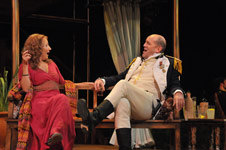 A few months ago, following a trip out to Orinda to see G B Shaw’s Mrs Warren’s Profession at the
A few months ago, following a trip out to Orinda to see G B Shaw’s Mrs Warren’s Profession at the 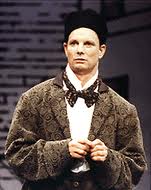 As a theatre critic, I generally have a policy that if I find myself feeling negative about the work of a single company over several shows, I’ll give seeing productions by that company a break and then go back and check another show out after some time has elapsed. This helps to “reset the clock” so to speak. There’s no point in harping on over and over again about how terrible one organization’s work is. That gets dispiriting and discouraging for readers and writer alike. It tends to annoy the artists too.
As a theatre critic, I generally have a policy that if I find myself feeling negative about the work of a single company over several shows, I’ll give seeing productions by that company a break and then go back and check another show out after some time has elapsed. This helps to “reset the clock” so to speak. There’s no point in harping on over and over again about how terrible one organization’s work is. That gets dispiriting and discouraging for readers and writer alike. It tends to annoy the artists too.  1. More opera websites should provide information about their choruses. Notices about auditions and lists of singers don’t provide enough detail about how these important musical organizations work. I’d like to see opera websites publishing information about the history and development of their choruses, important milestones in their pasts, production photos, information about life backstage for chorus members and what it’s like to audition and rehearse with an opera chorus. I say this because I just recorded a
1. More opera websites should provide information about their choruses. Notices about auditions and lists of singers don’t provide enough detail about how these important musical organizations work. I’d like to see opera websites publishing information about the history and development of their choruses, important milestones in their pasts, production photos, information about life backstage for chorus members and what it’s like to audition and rehearse with an opera chorus. I say this because I just recorded a  I dropped in to a bar on Polk Street last night when the weekly pub quiz was in full flight. I’ve played a couple of quizzes in bars in my time, but it wasn’t until I experienced this is as a sort of semi-player, semi-viewer, that I really got to appreciate how lively these kinds of events are from a cultural perspective.
I dropped in to a bar on Polk Street last night when the weekly pub quiz was in full flight. I’ve played a couple of quizzes in bars in my time, but it wasn’t until I experienced this is as a sort of semi-player, semi-viewer, that I really got to appreciate how lively these kinds of events are from a cultural perspective. I was chatting with the executive director of a prominent music ensemble over coffee the other day. Her group often performs concert programs in Berkeley but, unusually, no East Bay performances were scheduled for the ensemble’s recent program of concerts.
I was chatting with the executive director of a prominent music ensemble over coffee the other day. Her group often performs concert programs in Berkeley but, unusually, no East Bay performances were scheduled for the ensemble’s recent program of concerts.
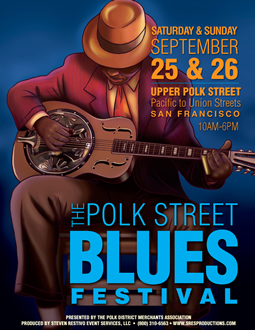 Days like I had on Saturday remind me of the sheer joy of living in this part of the world. There is no other place quite like it for off-the-radar cultural encounters and non-everyday experiences.
Days like I had on Saturday remind me of the sheer joy of living in this part of the world. There is no other place quite like it for off-the-radar cultural encounters and non-everyday experiences. Last night at the
Last night at the 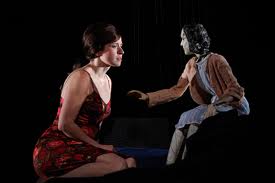 A great playwright is like a puppet master: He or she subtly pulls the strings of character and action to make life seem larger than it is in reality. Ideally, he or she resides in the shadows and the puppet/play itself takes center stage.
A great playwright is like a puppet master: He or she subtly pulls the strings of character and action to make life seem larger than it is in reality. Ideally, he or she resides in the shadows and the puppet/play itself takes center stage. …Why isn’t it ever any good?
…Why isn’t it ever any good?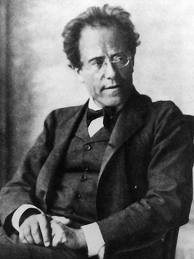 A few days ago, the rules that govern the selecting of repertoire for an orchestral season came up for discussion at a dinner party with a couple of friends, one of whom happens to be the music director of a symphony orchestra.
A few days ago, the rules that govern the selecting of repertoire for an orchestral season came up for discussion at a dinner party with a couple of friends, one of whom happens to be the music director of a symphony orchestra.